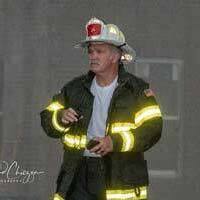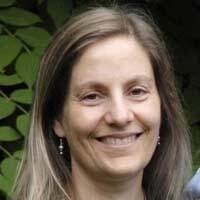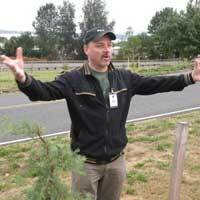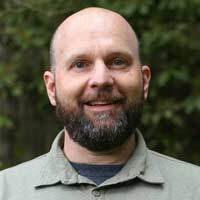
Rachel Drummond, MEd
The devastation from home and wildfires leaves nothing to the imagination. Images of smoking home remnants, charred tree trunks, and billows of yellow, orange, and grey air are enough to make anyone wonder: is hellscape part of “the new normal?”
Fortunately, fire safety experts confirm that while we live in uniquely challenging times, there are simple things people can do to protect their loved ones and property from home fires, wildfires, and the hazardous air quality that smoke creates.
Two of the most common types of fire are home fires and wildfires. This article features four experts’ recommendations on how to prevent fires indoors and outdoors.
Fire safety begins at home with simple yet effective strategies. The National Fire Protection Association (NFPA) hosts Fire Prevention Week from October 3-9, 2021, intending to eliminate preventable death, injury, property, and economic loss due to fire, electrical, and related hazards.
Surprisingly, in 2020, the NFPA reported 41 percent of the home fire deaths from 2014-2017 had no smoke alarm present. Of these tragic casualties, 16 percent of homes had at least one smoke alarm, but it did not operate correctly, perhaps due to dead batteries.
Wildfire safety depends mainly on the whims of Mother Nature, but awareness of climate change and basic air quality safety knowledge are the best lines of defense. For example, the US Environmental Protection Agency (EPA) says people can avoid long-term health issues by limiting exposure to fine particulate matter: a mixture of microscopic particles and liquid droplets found in wildfire smoke.
In addition, by limiting time outdoors when air quality is hazardous in the summer, not burning wood stoves when air is stagnant in the winter, and regularly changing HVAC air filters, people can prevent long-term respiratory health problems such as asthma and heart disease.
Read on to learn more about fire prevention from four fire safety experts specializing in home fire prevention, wildfire prevention, and air quality safety awareness.

Steve Dew has been a firefighter with the Memphis Fire Department for 36 years. He serves as the Fire Chief for Battalion 10 and oversees six stations in Memphis, Tennessee.
He shared some simple ways that people can protect their homes and families from fires.
“The main thing we push in the City of Memphis is that everyone should have working smoke detectors in their homes. You’d be surprised how many people don’t have them or have them but haven’t tested their batteries,” Chief Dew emphasized.
“For folks on limited incomes, Memphis Fire Department gives free smoke detectors. Our firefighters will come and install them for free. We encourage people to take advantage of free smoke and carbon monoxide detectors if they don’t have the resources to purchase and install them,” he added.
Chief Dew recommended that folks check their smoke detector batteries twice a year, using Daylight Savings Time changes in March and November as guides.
To test your smoke alarm, push the “test” button and wait to hear a loud chirp sound. If you don’t hear a chirp, replace the battery. If your smoke detectors chirp loudly on their own, it’s time to change the battery.
Chief Dew closed with his thoughts on creating fire breaks within houses by closing doors: “Educating kids on fire safety is important. When my daughters were young, I’d come to their schools and teach children and their families to sleep with their doors shut at night. This offers another layer of protection and gives you more time to escape if there is a fire. For example, if a fire starts in the kitchen, you’ll hear the smoke alarm, and you’ll have more time to get outside and save your life if your bedroom door is closed.”

Gabriela Goldfarb is the Environmental Public Health Section Manager at the Oregon Health Authority Public Health Division. She has two decades of experience in the natural resource and environmental protection fields and as a policy advisor in the Oregon Governor’s Office. Her work focuses on the intersectionality between the environment and human health.
She shared some general tips on climate change and public health.
“Raising awareness that rapidly accelerating climate change is posing increasing threats to the health of individuals and community well-being, including, specifically, fire and smoke impacts, is key to helping people understand the need to take steps to protect themselves from these threats and support action to reduce greenhouse gas emissions that drive extreme weather,” Goldfarb stated.
She closed with some ideas to protect indoor air quality as the country grapples with longer and more intense wildfire seasons fueled by manmade climate change.
“Our principal focus is on protecting people from wildfire smoke and, increasingly, prescribed fire smoke,” she said. “We advise people to prepare in advance by closing doors and windows or sealing off a room in their home, running their HVAC system appropriately, purchasing an air filtration device, or making a DIY smoke filter with a box fan and furnace filter to create a clean air space at home or planning in advance to get away to a smoke-free area. Avoid burning candles, vacuuming, or using gas stoves to keep your indoor air cleaner.”

Jim Gersbach is a Public Affairs Specialist for the Oregon Department of Forestry who helps the agency navigate the changing dynamics of Oregon’s forest management and regulation and strengths connections with diverse audiences. He educates policymakers and residents on the effects of climate change, wildfire mitigation, and post-wildfire recovery.
In addition, Gersbach highlights vital aspects of the agency’s mission, such as controlled forest burning, smoke management, and promoting forest health and urban forestry in Oregon’s cities and towns.
Gersbach explained how fire and arson investigators are able to figure out the cause of fires.
“Fire investigators look for physical evidence in a wildland investigation,” he shared. “For example, lightning strikes often cause fires in forested higher elevation areas. In addition, cars driving on the freeway during fire season can unknowingly cause fires. A few years ago, a roadside fire was caused by sparks from a chain that came loose on the freeway and bounced along the road, igniting a string of wildfires in dry grass along the road next to the vehicle.”
Gersbach mentioned some types of evidence fire investigators can find in their searches.
“We look around for signs that help determine the point of origin of a fire. Are there vehicle tracks? A campfire ring? Gas cans? Freshly mowed grass? Were there rocks in the grass that sparked when flung against the metal lawnmower? Was there logging happening in that area? Sometimes people leave behind cigarette butts and depending on wind direction and fuel, a wildfire may not destroy this telltale evidence,” he stated.
When asked about the upward trends in the number of wildfires and intensity, Gersbach graciously shared a chart with data from Oregon.

He added that “the number of fires varies depending on a couple of factors. Population growth is one major contributor—more people means more human-caused fires. Lightning is another consideration; some years we get hundreds, but in 2019 and 2016, we had far fewer, as you can see in the graph.”
Since 1990, the state of Oregon’s population has increased by more than 53 percent. The US Census recorded the state’s residents at 2.8 million in 1990 compared to 4.3 million in 2020. Interestingly, in 2020, Oregon reported its highest number of acres burned: approximately 1.1 million.
He continued, “As for intensity, factors that drive how quickly a fire will spread are fuel type, wind speed, whether the fire is burning on a moist forest floor (slower) versus a dry grass field (faster). Drought results in dry vegetation, which can catch fire and burn more easily. That’s what happened in 2020; the wind carried embers miles ahead of the fire, and that’s how we ended up with five Mega Fires (defined as fires that burn more than 100,000 acres) in Oregon.”

Dylan Darling is a Public Affairs Specialist at the Oregon Department of Environmental Quality (DEQ).
In partnership with the Oregon Department of Forestry, the US Forest Service, the National Weather Service, and the Oregon Health Authority, county health organizations, and tribal partners, he and his team educate the public on the ill effects of wildfire smoke and its impacts on human health, especially for sensitive groups (e.g., people with breathing difficulties such as asthma).
In recent years, the number of wildfires has increased, as has their intensity. This has led to a decrease in air quality for longer stretches of time. Darling explained the role of DEQ in educating the public.
“A big part of what DEQ does is inform people when the air quality is unhealthy for sensitive groups,” he stated. “We do this by using data from a network of 70 air quality monitors around Oregon, and we have plans to add 20 air quality monitors to improve the accuracy of our data in the coming years.”
The Oregon DEQ monitors for Federal Clean Air Act pollutants, including:
Darling covered some resources to monitor local air quality during wildfire season:
He closed with a warning about the future effects of climate change on wildfires and air quality: “As long as climate change continues, we’ll see more drought and more wildfires. The frequency and severity of unhealthy air quality days will continue to persist, so people need to take steps to protect the air they breathe.”
In anticipation of Fire Prevention Week 2021, here are some resources to monitor local air quality and learn more about local initiatives:

Rachel Drummond, MEd
Rachel Drummond has given her writing expertise to ForensicsColleges.com since 2019, where she provides a unique perspective on the intersection of education, mindfulness, and the forensic sciences. Her work encourages those in the field to consider the role of mental and physical well-being in their professional success.
Rachel is a writer, educator, and coach from Oregon. She has a master’s degree in education (MEd) and has over 15 years of experience teaching English, public speaking, and mindfulness to international audiences in the United States, Japan, and Spain. She writes about the mind-body benefits of contemplative movement practices like yoga on her blog, inviting people to prioritize their unique version of well-being and empowering everyone to live healthier and more balanced lives.